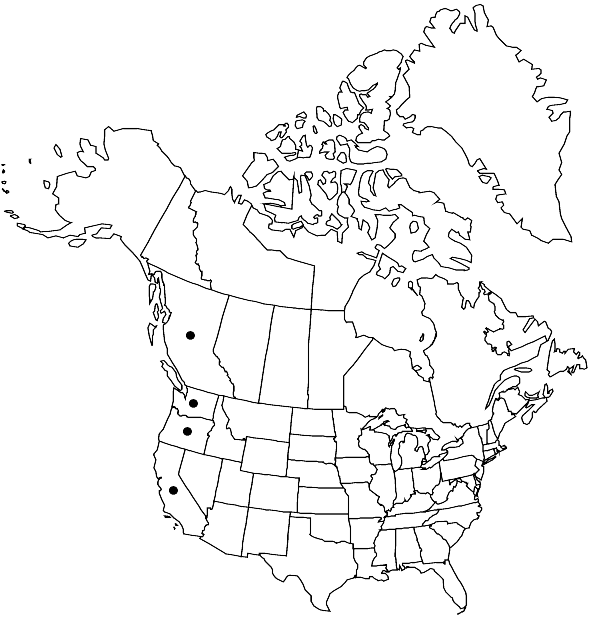Ditrichum schimperi
Revis. Gen. Pl. 2: 835. 1891,.
Plants in tufts or gregarious patches, yellowish green. Stems to 0.6 cm, rarely to 1 cm, simple. Leaves crowded, erect-spreading to slightly secund, ± contorted, 3–7 mm, narrow filiform-subulate from an ovate to lanceolate base, lamina 2-stratose distally; margins plane to incurved, 1-stratose proximally, 2-stratose distally in subula, entire or slightly serrulate near the apex; costa broad, percurrent to excurrent, occupying the width of the subula near the apex, ca. 1/4 width of leaf at base, in cross-section with an abaxial stereid band and a few adaxial stereids; distal lamina cells shortrectangular, becoming elongate and rectangular proximally, narrower and longer towards the margins; perichaetial leaves with a sheathing base. Specialized asexual reproduction unknown. Sexual condition autoicous; perigonia in small buds just proximal to the perichaetium. Seta yellow, 1–3 cm, erect to flexuose. Capsule erect to inclined, yellowish to yellowish-brown, somewhat reddish-brown with age, cylindric, 1.5–3 mm, weakly sulcate when dry; operculum short-rostrate, to about 1 mm; annulus narrow, dehiscent; peristome short, to 300 µm, the teeth irregularly perforate or divided proximally, with a narrow basal membrane, finely papillose distally, nodose proximally. Calyptra large, cucullate and twisted. Spores 20–30 µm, roughened, brown.
Phenology: Capsules mature spring (Apr–May).
Habitat: Moist soil
Elevation: low elevations
Distribution

B.C., Calif., Oreg., Wash.
Discussion
L. E. Anderson and V. S. Bryan (1958) stated that Ditrichum schimperi is not uncommon from Vancouver Island and south through the Coastal Ranges to Yosemite Valley. This is the only Ditrichum species along the west coast of North America with large and roughened papillose spores. Ditrichum pallidum from the eastern and southern United States also has large, roughly papillose spores of similar size, but differs in peristome characters. The peristome of D. schimperi is finely papillose, rather than spinose- or spiculose-papillose, is reduced in size, and is irregularly perforate proximally.
Selected References
None.
Lower Taxa
"um" is not declared as a valid unit of measurement for this property.